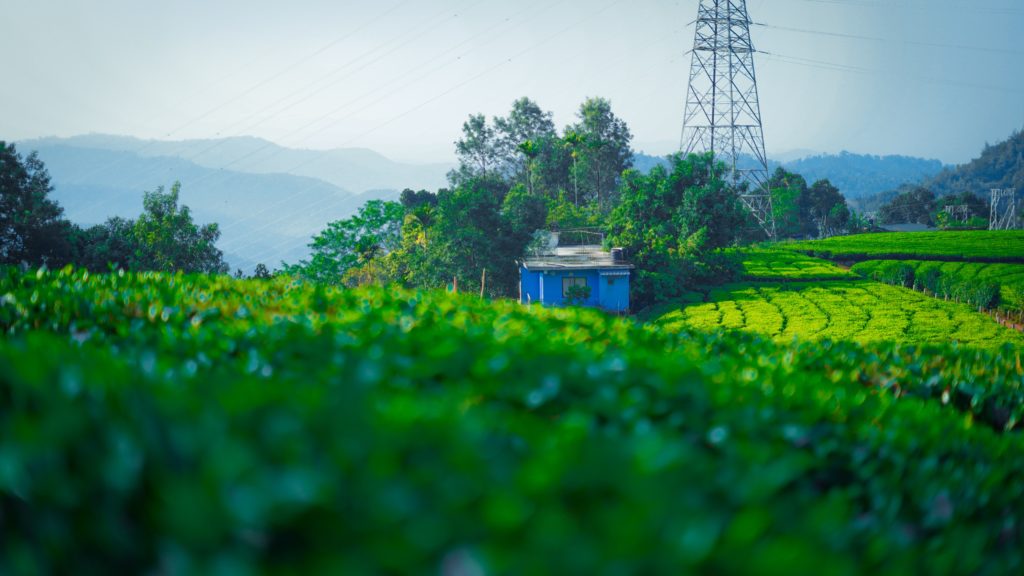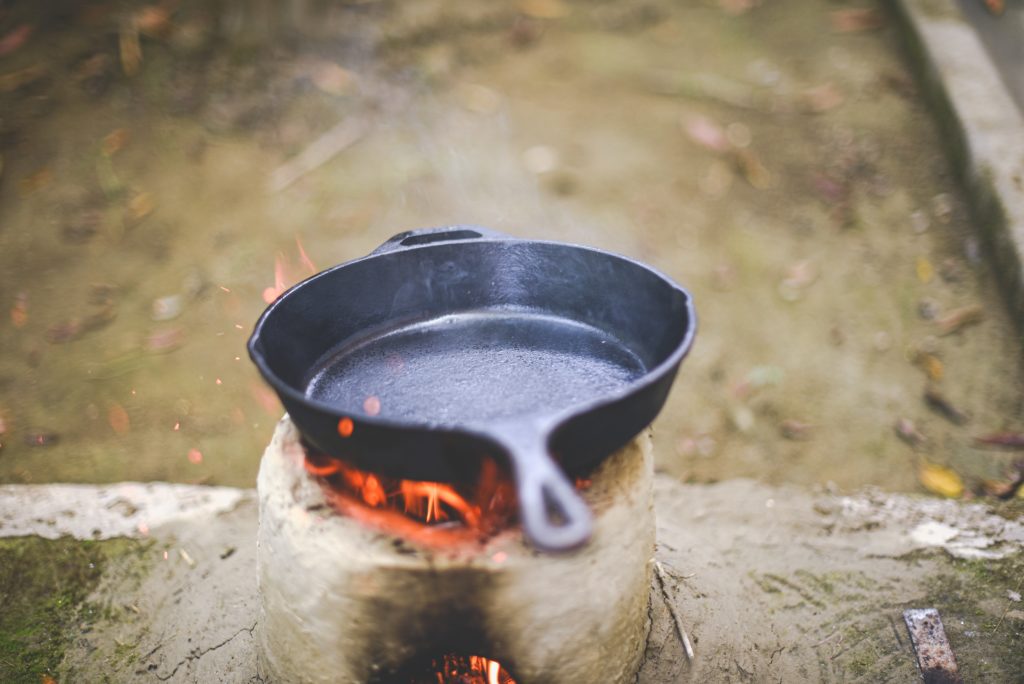Overcoming Barriers to Energy Access in Rural India
Access to electricity has improved in the last 20 years, but economic and cultural barriers to clean cooking energy in India remain.
In the last decades, India has witnessed unprecedented improvements in household energy access. Since 2001, the government has expanded access to electricity and brought nearly 800 million Indians out of darkness. In the seven years between 2016 and 2023, the Indian government provided clean cooking energy solutions in the form of liquefied petroleum gas (LPG) connections to more than 95 million Indian families.
97% of Indian households had access to electricity in 2020 in comparison to only 56% in 2000.
Source: CEEW.
Even though these fast-paced developments brought India significantly closer to achieving the milestone of universal access to modern energy solutions, it is also important to understand the extent to which this has translated into uninterrupted last-mile energy access to every corner of India. Sensing the need to develop a more nuanced understanding of energy, the Council on Energy, Environment and Water (CEEW) conducted the India Residential Energy Survey (IRES) 2020, a nationally-representative household survey, across 21 Indian states that together account for 97% of the population. The IRES 2020 covered various dimensions of electricity and cooking energy-use in households. The following findings revealed a lot about India as the subcontinent advances with its energy transition.
Getting closer to universal electricity access
Is every home wired?
India has made considerable progress toward household electrification, with nearly 97% of households having access to electricity in 2020 in comparison to only 56% in 2000. However, the survey revealed that 2.4% of Indian households remain unelectrified, most of them concentrated in rural northern and eastern states of Uttar Pradesh, Madhya Pradesh, Rajasthan, Haryana and Bihar. The majority of these unelectrified households are multi-dimensionally poor and cite their inability to afford electricity as the reason for not having a grid connection.
How many hours do the wires carry electricity supply every day?
An average Indian household now receives more than 20 hours of power supply every day, with Delhi, Kerala and Gujarat receiving just over 23 hours of supply in both urban and rural areas. However, despite significant improvements, households in Uttar Pradesh, Jharkhand, Haryana, Assam and Bihar face long power outages, with rural households still facing six or more hours of outages a day.
How reliable is the power supply?
Three out of every four households surveyed reported that they still face unanticipated power outages. Two-thirds of rural and two-fifths of urban households face outages at least once a day, with Uttar Pradesh, Jharkhand, Assam, Bihar, and Haryana having the highest frequency and duration of outages. One-third of households also faced at least one of three supply quality issues: long blackouts, low voltages or appliance damage due to voltage fluctuations.
Steps to reach 24/7 electricity for all
One cannot discuss the Indian power story without discussing the dismal state of electricity distribution companies, which are in severe financial distress. More than half of public distribution companies had aggregate technical and commercial (AT&C) losses of over 20% in the 2020–21 fiscal year. Such high losses affect the distribution company’s ability to provide high-quality 24/7 power. A crucial reason behind the companies’ poor financial condition is the revenue shortages arising from lower electricity tariffs and an inefficient billing and payment collection system, which leads to lower recovery of electricity charges from the consumers.
2/3 of rural and 2/5 of urban households still face electricity outages at least once a day.
Source: CEEW
To facilitate adequate mechanisms to collect charges from electricity consumers, the government launched the Revamped Distribution Sector Scheme (RDSS) in 2022. The RDSS aims to reduce AT&C losses to 12 -15% by 2025 and replace 250 million conventional electricity meters with smart prepaid meters by 2026. Smart prepaid meters will ensure advance payment from consumers to distribution companies for electricity consumption, eliminating meter-reading and billing-related issues, as well as automatic disconnection in case a bill is unpaid. Smart meters have the potential to improve revenue, which can then be invested in improving power supply infrastructure. Improved revenue will also go a long way in improving distribution companies’ ability to provide reliable, 24/7 power to all and create capacity for supporting disadvantaged consumers with subsidies.

Both the India’s central and state governments should explore the idea of an ultra-low lifeline tariff, say ₹2 (or €0.023) per unit of electricity consumed, for households that are unable to afford the minimum basic electricity consumption. Implementing such an electricity tariff (for marginal households with monthly electricity consumption of less than 30 or 50 units) at the national level would help poorer households sustain a minimum level of electricity consumption without getting disconnected from the grid.
Transitioning to clean cooking in India
Burning solid fuels, or biomass, to cook in poorly-ventilated homes exposes families, particularly women and children, to indoor air pollution. India has made remarkable progress over the past decade to address this and replace traditional solid cooking fuels with clean cooking options, primarily liquified petroleum gas. This was done through the Pradhan Mantri Ujjwala Yojana (PMUY) scheme, launched in May 2016. Under the first phase of the PMUY program, the government distributed LPG connections to more than 80 million poor and socially disadvantaged families at subsidised costs, significantly increasing the share of LPG users in the country from 28.5% in 2011 to 71% in 2020. The health benefits of this were estimated to be around 150,000 premature deaths avoided in 2019. It also helped India progress on several of the United Nations’ Sustainable Development Goals (SDGs), including SDG 3: Good health and well-being, SDG 5: Gender equality, SDG 7: Affordable and clean energy, SDG 13: Climate change, and SDG 15: Life on land/forest degradation.
While 85% of Indian households had access to liquified petroleum gas in March 2020, but nearly half of them, mostly in rural India, continued to use it alongside polluting solid fuels.
Source: CEEW
However, as of March 2020, even though 85% of Indian households had access to LPG, nearly half of them, mostly in rural India, continued to use it alongside polluting solid fuels. Less than half of households in eastern and central Indian states such as Jharkhand, Bihar, Madhya Pradesh, West Bengal and Odisha, use cooking gas as their primary fuel.
India needs to overcome several gaps including affordability, lack of timely LPG refills, easily available, free biomass (such as fire wood, cow dung and agricultural residue that is burned for cooking purposes) and cultural preferences for biomass-cooked food, to ensure a universal and sustained transition to clean cooking fuels.
Overcoming the affordability barrier
The price of domestic LPG refills (14.2 kg per cylinder) in India has almost doubled from less than ₹600 (€6.76) in November 2020 to around ₹1,100 (€12.39) in December 2022. At the current refill price of domestic LPG, transitioning to its exclusive use would require an average rural Indian household to spend 13% of its overall monthly expenditure on cooking energy needs. This is significantly higher than the actual reported spending of 4.9% of monthly expenses on cooking energy needs in March 2020.
In order to address the affordability barrier, the government announced a targeted subsidy of ₹200 (€2.25) per 14.2 kg cylinder for up to 12 refills every year for 90 million PMUY beneficiaries in May 2022. However, even after this subsidy, an average rural household will still have to spend more than 10% of its monthly income on LPG refills in order to transition to its exclusive use. There is a need to provide higher subsidies per refill, and the government can start by targeting households exhibiting low LPG consumption over time.

Financing the higher subsidies amidst the pandemic-induced economic crisis is another challenge, especially because the entire budget for LPG subsidies comes from the Ministry of Petroleum and Natural Gas (MoPNG). Roping in other governmental and non-governmental entities to contribute to India’s LPG subsidy basket will reduce the burden on MoPNG and allow higher subsidies. For instance, if any philanthropic organisation interested in maternal health wanted to subsidise LPG consumption for pregnant women and new mothers in a specific area for a specific time period, the government should facilitate the receipt of such funding.
Availability barrier
The Council on Environment, Energy and Water found that in rural India, only 54% of the LPG-users receive home delivery for their LPG refills. LPG distributors often complain that doorstep delivery in villages is not financially viable. For households that do not get home delivery, members have to travel an average distance of 4.9 km per way in rural areas to get their cylinders refilled. Thus, many consumers cannot easily travel to the distributor gas agency to pick up a cylinder and transport it back home.

Currently, the LPG distributors receive a flat commission of ₹64.84 (€0.73) to provide home delivery of each LPG refill. However, the LPG distributors’ commission per refill delivery should be calculated based on the cost of service provision and cylinder sales per month. We may also consider a decentralised LPG delivery system at the village level and loop in self-help groups and common service centres.
Easy availability of solid biomass fuels
Because biomass is available for free in rural India, any amount of subsidy for LPG may be ineffective in promoting its sustained consumption. The 2020 India Residential Energy Survey found that about 14% of rural households in India rely exclusively on free biomass, while another 50% collect biomass to supplement clean fuels. In such cases, we need to pilot initiatives to promote decentralised biomass processing units that manufacture briquettes and pellets for industrial and commercial establishments using locally-available biomass. Besides putting a monetary value to locally-available biomass, this could also create income opportunities for households currently gathering it for free.
Awareness barrier
In India, a preference for food cooked on traditional chulhas is a critical barrier to clean cooking options. In order to address such gaps, the MoPNG organises village-level LPG ‘panchayats’ or group meetings, to generate awareness about the ill effects of continued reliance on solid fuels for cooking. These panchayats also allow LPG consumers to share their experiences with one another.
The most important barrier facing India is the unaffordability of modern energy sources to sustain consumption.
Source: CEEW
Most participants in LPG panchayats are women, but the decision to purchase an LPG refill lies with the male members in most Indian homes. Therefore, LPG awareness campaigns need to target both men and women. We also need to test various other types of behaviour change communication strategies to determine the right type of messaging.
Are we there yet?
India has shown remarkable progress in both electricity and cooking energy access over the last decades due to the government’s efforts to improve energy access. But the country is yet to achieve “access to affordable, reliable, sustainable and modern energy for all,” as defined in the UN SDG 7.
After subsidies, an average rural household will still have to spend more than 10% of its monthly income on LPG refills in order to transition to its exclusive use.
Source: CEEW.
The absence of nationally representative data that could enable a comprehensive and periodic assessment of households’ energy choices has also been a persistent concern. Periodically tracking our progress (through surveys like IRES) and solving emerging issues are needed to realise SDG 7.
The most important barrier facing India is the unaffordability of modern energy sources to sustain consumption. We need to enhance rural incomes by integrating energy access programs with broader social assistance and rural development programs (such as MGNREGA and state rural livelihood missions) to address the affordability barrier. Further, as the Global South is struggling with the affordability barrier, developed countries should provide finance to developing nations to ensure they are able to fulfil their energy access targets. With the Group of 20 Presidency for 2023, India has a great opportunity to revitalize global commitments to the energy transition and spearhead the collective voice of developing nations.
